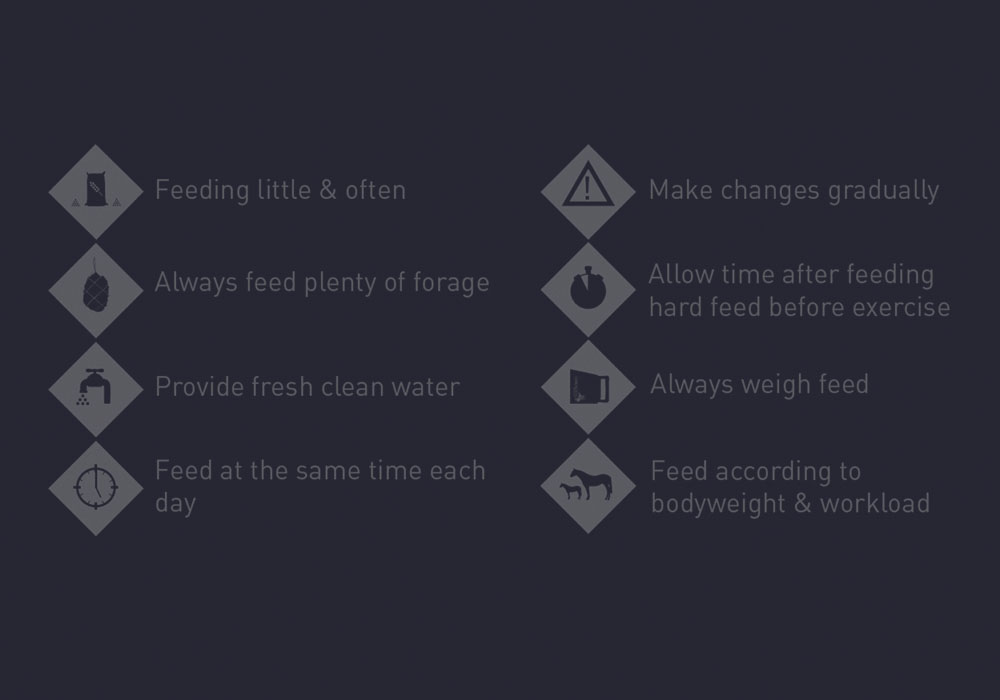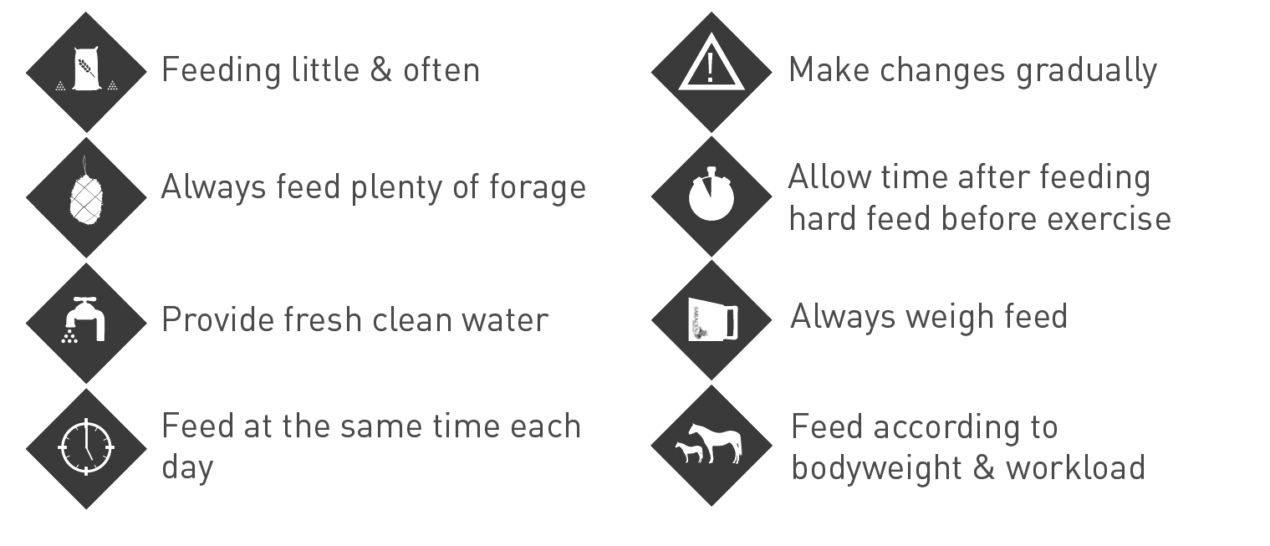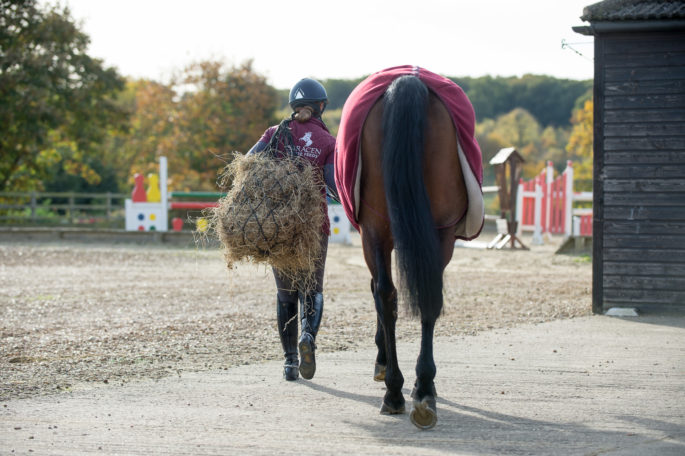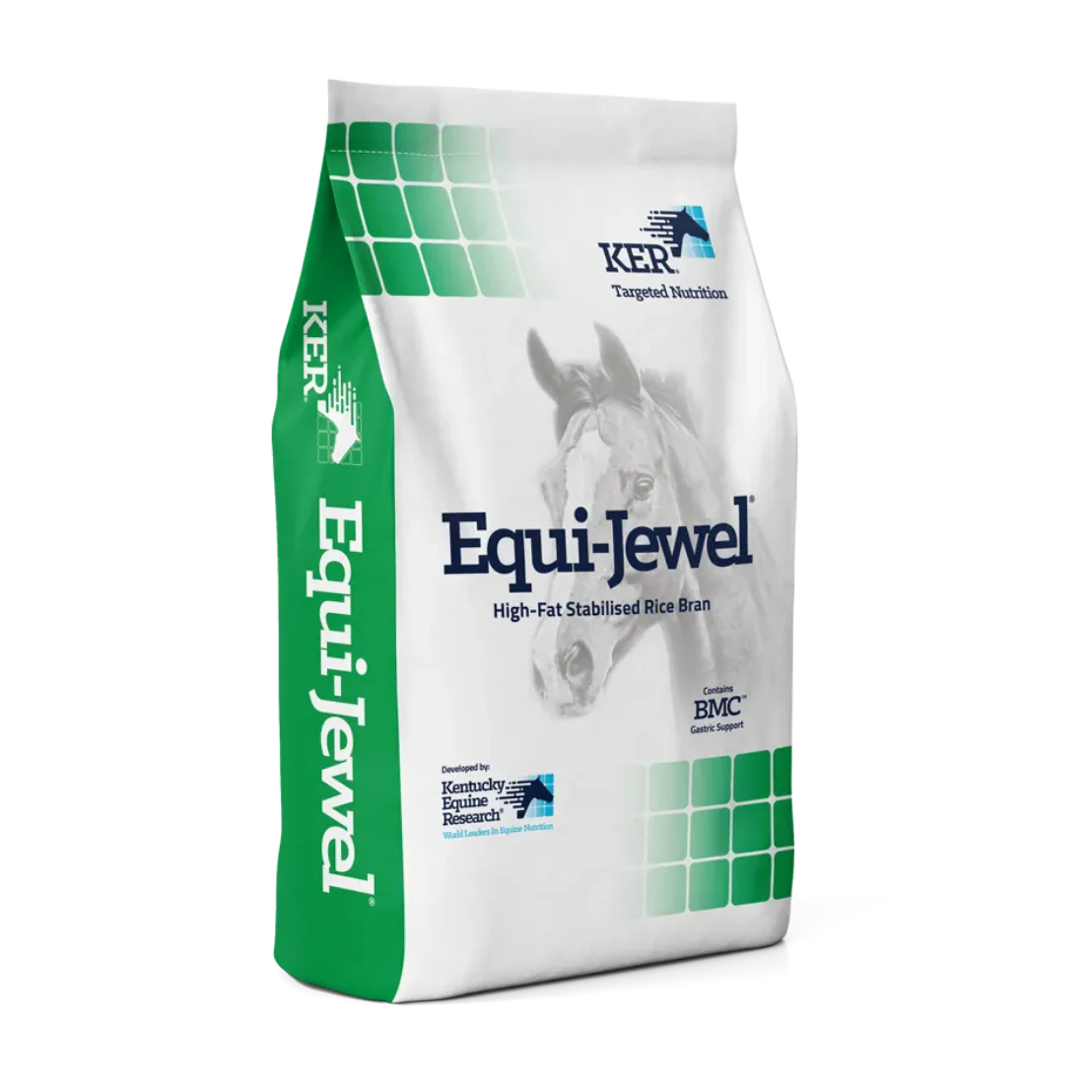Nutritional Management to reduce the risk of Gastric Ulcers

Back to basics feeding rules

Reduce cereal & starch intake

Cereal and starch intake has been associated with an increased risk of EGUS in horses. Exceeding 2g/Kg body weight (BW) of starch intake per day was associated with a two fold increase in the likelihood of EGUS and feeding more than 1g/Kg BW of starch per meal was associated with a 2.6 fold increase in the likelihood of EGUS.
STARCH PER DAY EQUATION:
(Feed in grams/100) x Starch % of feed indicated on the label
Starch per day for RE-LEVE®-Mix when fed at 2kg (the recommended intake for a 500kg horse)
(2000 / 100) x 8 =160g of starch per day
It is recommended for 500kg horse with ulcers not to have more than 500g of starch per meal and no more than 1,000g per day
Look for feeds containing the BETA EGUS Approval Mark as these feeds will ensure you are staying below this starch threshold if fed at the recommended intake.
Forage
Horses should ideally be allowed consistent access to forage. If this is not possible because your horse is a good-doer NEVER feed less than 1.5% of the horse’s body weight on a dry matter basis as forage, and look at ways in which the forage being fed can be made to last longer, such as
- Putting hay in a small holed haynet
- Putting different haynets around the stable/field to encourage browsing behaviour
- Giving the hay allowance spread throughout the day rather than one amount in the morning and one amount in the evening
- Soaking hay to reduce the soluble carbohydrate content.

Recent research by Husted 2009 showed that daytime forage deprivation causes ESGD whereas night-time starvation in the same horses does not. So using this information it seems appropriate to prioritise daytime forage over large haynets at night.
- 80% forage between 7am and 7pm
- 20% forage between 7pm and 7am
Food For Thought
Forage water dunking has been observed as a warning sign for squamous ulcers, it is thought that by dunking coarse forage it softens it and reduces the risk of mechanical damage to the stomach lining when it is digested.





